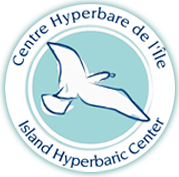The Top 20 Observations reported by the Parents of Children within the Autistic Spectrum Disorders
The observations listed below have consistently been reported by the parents of children having a diagnosis that places them within the Autistic Spectral Disorders after therapeutic treatments with hyperbaric oxygen. These observations have been compiled from treatments over last eleven years conducted at a pressure of 1.5 ATA
1. Activity: more age appropriate activity (in contrast to true hyperactivity).
2. Attention Span: “He/She’s now just ‘with us’ where before he/she wasn’t”.
3. Awareness: increased in general.
4. Bowel function: better stools, change in frequency, consistency, character of stool; able to potty train fully or more quickly than before.
5. Conversational language: more free speech; interjects own words [sounds, babble] as he/she attempts to be part of family or therapy interaction; speech flows more freely; longer sentences at appropriate times.
6. Eye contact: improved, turns to the person who is calling or talking; “curious” about eyes and “the meaning” of other’s eyes; holds eye contact longer.
7. Feelings: more in touch with his/her own feelings; understands others feelings or expressions; has higher highs and lower lows in a more normal way of being.
8. Gestures are more appropriate: better use of body language to communicate wants, needs, and desires; requests that you attend to his/her emotional or physical needs.
9. Good days: more, better, or of a different nature and quality than seen by family or reported by school and therapists.
10. Happier: a greater general sense of feeling good about his/her self and life in general; demonstrates an attitude that says, “Something about my life is different and better today.”
11. Hyperactivity: more (true hyperactivity not to be confused with a child being more age appropriately active). The Top 20 Observations reported by the Parents of Children within the Autistic Spectrum Disorders
12. Opinions: has his/her own opinions and definitely lets you know what they are more than ever before, e.g. s/he expresses more freely and/or more appropriately his/her likes or dislikes, e.g. “the I don’t want to’s because I’m happy doing what I’m doing and I have my rights, you know!”, etc.
13. Independent: new level of self-assuredness, self-confidence,attempting to do things on his/her own; “self perceived ‘appropriate’anger or irritation for you not letting him/her do something he/she feels perfectly capable of now doing on his/her own”.
14. “Presence”: more involved; more “with it”; seems much more attune to what is happening on a day-to-day basis and in the world around him/her.
15. Requests: makes his/her needs known to family, friends, playmates.
16. Self confidence: now present for the first time or greater than before treatment; seems proud of himself/herself and his/her accomplishments; wants and/or demands you acknowledge what s/he has done; expects praise and “proudly glows” when it is given.
17. Sentence structure: longer; more complete; more complex; better structured; uses adjectives, adverbs, prepositions, pronouns, etc.
18. Spontaneous speech: more frequently initiates conversation; talks more without prompting or just echoing or repeating.
19. Verbalization or vocalization increasing and/or more appropriate, “babbling” increasing; more sounds being made or attempted.
20. Vocabulary: knows more words ; knows words no one ever taught; you find yourself “surprised” that s/he said such-and-such; vocabulary is used more appropriately
